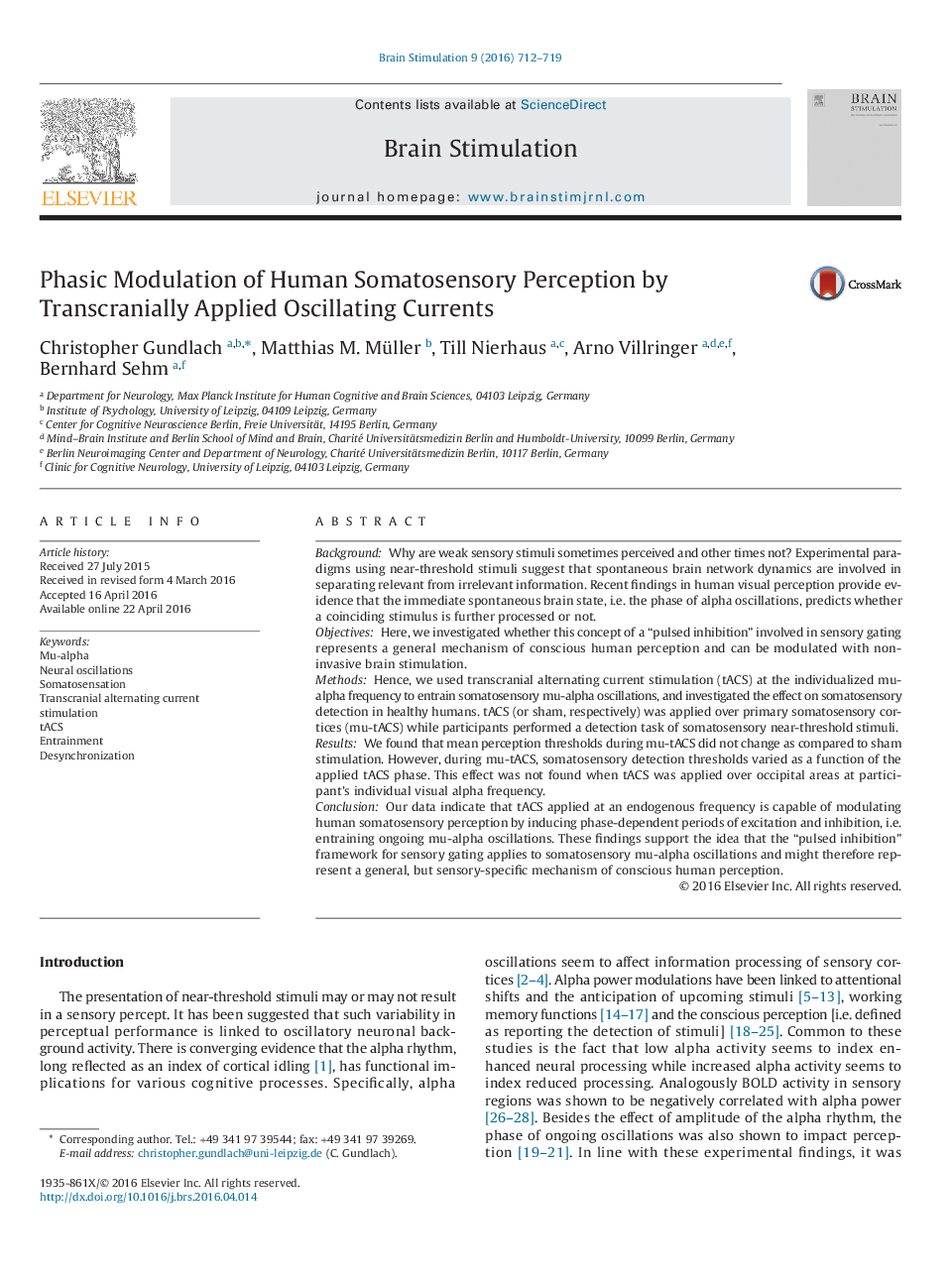| Article ID | Journal | Published Year | Pages | File Type |
|---|---|---|---|---|
| 3038696 | Brain Stimulation | 2016 | 8 Pages |
•Perception is biased by amplitude and phase dynamics of ongoing alpha oscillations, while effects of alpha oscillations in somatosensation are less well understood.•tACS was tuned to individual somatosensory alpha oscillations (mu-tACS) and applied during a somatosensory perception task.•Mu-tACS modulates somatosensory perception phasically, but not tonically.•tACS tuned to visual alpha oscillations (alpha-tACS) does not modulate somatosensory perception.•Our results support the validity of the pulsed inhibition framework in somatosensation.
BackgroundWhy are weak sensory stimuli sometimes perceived and other times not? Experimental paradigms using near-threshold stimuli suggest that spontaneous brain network dynamics are involved in separating relevant from irrelevant information. Recent findings in human visual perception provide evidence that the immediate spontaneous brain state, i.e. the phase of alpha oscillations, predicts whether a coinciding stimulus is further processed or not.ObjectivesHere, we investigated whether this concept of a “pulsed inhibition” involved in sensory gating represents a general mechanism of conscious human perception and can be modulated with non-invasive brain stimulation.MethodsHence, we used transcranial alternating current stimulation (tACS) at the individualized mu-alpha frequency to entrain somatosensory mu-alpha oscillations, and investigated the effect on somatosensory detection in healthy humans. tACS (or sham, respectively) was applied over primary somatosensory cortices (mu-tACS) while participants performed a detection task of somatosensory near-threshold stimuli.ResultsWe found that mean perception thresholds during mu-tACS did not change as compared to sham stimulation. However, during mu-tACS, somatosensory detection thresholds varied as a function of the applied tACS phase. This effect was not found when tACS was applied over occipital areas at participant's individual visual alpha frequency.ConclusionOur data indicate that tACS applied at an endogenous frequency is capable of modulating human somatosensory perception by inducing phase-dependent periods of excitation and inhibition, i.e. entraining ongoing mu-alpha oscillations. These findings support the idea that the “pulsed inhibition” framework for sensory gating applies to somatosensory mu-alpha oscillations and might therefore represent a general, but sensory-specific mechanism of conscious human perception.
